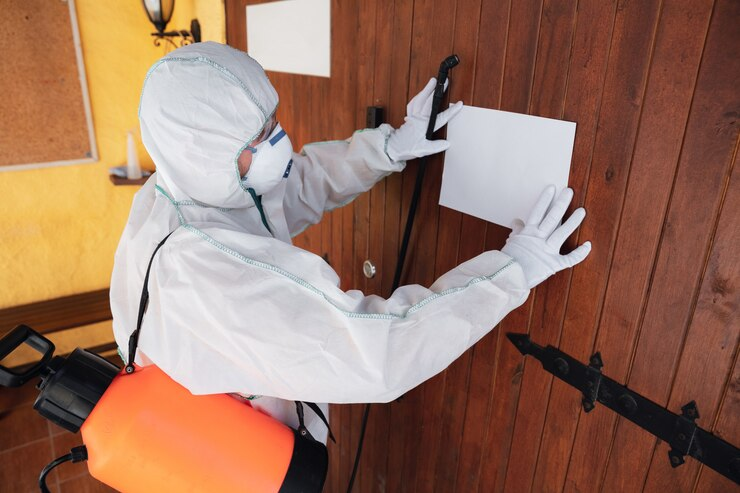Termites are silent destroyers, often causing significant damage before homeowners even realize they have an infestation. Ignoring regular termite pest inspections can lead to costly repairs and extensive structural damage.
This article delves into the potential damages caused by termites and emphasizes the importance of regular inspections to protect your property.
Understanding Termites and Their Behavior
What Are Termites?
Termites are small, social insects that feed on cellulose found in wood. The most common types—subterranean, drywood, and dampwood termites—have distinct behaviors and habitat preferences, posing significant threats to various structures.
To safeguard your property, explore the comprehensive termite pest inspection services available at One Stop Inspections. They offer thorough inspections and effective treatment options to protect your home from termite damage.
How Do Termites Cause Damage?
Termites consume wood from the inside out, often leaving the exterior surface intact. This hidden damage can go unnoticed for years, leading to severe structural issues. Termites create tunnels and chambers within the wood, compromising its integrity and strength.
Potential Damages Caused by Termites
Structural Damage
The most significant and costly damage termites cause is to the structure of a building. They can weaken foundations, support beams, floor joists, and walls. Over time, this damage can lead to sagging floors, cracked walls, and even the collapse of parts of the building.
Foundation Damage
Subterranean termites are particularly notorious for damaging foundations. They build extensive underground tunnels, allowing them to access wooden structures from below. As they consume the wood, they weaken the foundation, potentially leading to uneven floors and significant safety hazards.
Wall and Ceiling Damage
Termites can travel through walls and ceilings, creating hollow spaces within wooden beams and studs. This can result in visible cracks, bulges, and other signs of structural weakness. In extreme cases, entire sections of walls or ceilings may need to be replaced.
Damage to Wooden Furniture and Fixtures
Termites don’t just limit their destruction to the structural components of a building; they also target wooden furniture, cabinets, and fixtures. Antiques, valuable furniture, and custom woodwork are particularly at risk, potentially leading to irreplaceable losses.
Cabinetry and Built-in Fixtures
Built-in cabinets and fixtures, such as kitchen islands and bathroom vanities, can suffer extensive termite damage. As termites consume the wood, these fixtures can become loose, wobbly, and eventually unusable, necessitating costly replacements.
Decorative Woodwork
Intricate woodwork, such as crown molding, baseboards, and decorative trim, can also fall victim to termites. The aesthetic and financial value of these elements can be significant, and their loss or damage can diminish the overall appeal and worth of a home.
Damage to Insulation and Wiring
Termites can also damage other materials within a building, including insulation and electrical wiring. As they tunnel through walls and ceilings, they can disrupt insulation, leading to reduced energy efficiency. Moreover, termites have been known to chew through electrical wiring, posing a serious fire hazard.
Insulation Damage
Compromised insulation can lead to higher energy bills as the heating and cooling efficiency of a home decreases. Replacing damaged insulation can be a labor-intensive and expensive process, adding to the overall cost of termite damage.
Electrical Hazards
Chewed electrical wiring can cause short circuits, power outages, and even fires. The cost of rewiring a home can be substantial, not to mention the potential danger posed to the inhabitants. Ignoring termite inspections can thus have life-threatening consequences.
The Financial Impact of Ignoring Termite Inspections
Cost of Repairs
The cost of repairing termite damage can vary widely depending on the extent of the infestation and the areas affected. Minor repairs might cost a few hundred dollars, while extensive structural repairs can run into the tens of thousands. Ignoring termite inspections can exponentially increase these costs as damage worsens over time.
Minor Repairs
Minor termite damage might include small sections of wood that need to be replaced, such as a portion of a wall or a single piece of furniture. While these repairs are relatively inexpensive, they can add up if multiple areas are affected.
Major Structural Repairs
Major repairs can involve replacing entire sections of a home’s structure, such as floors, ceilings, and support beams. These repairs often require the services of specialized contractors and can be extremely costly. In severe cases, a home might be deemed uninhabitable until repairs are completed.
Decreased Property Value
A home with a history of termite damage, such as how to kill drywood termites, can see a significant decrease in property value. Potential buyers are often wary of purchasing homes that have had termite issues, fearing future infestations and additional repairs. This can make it difficult to sell a home or result in a lower selling price.
Difficulty Selling
Homes with known termite damage or a history of infestations can linger on the market longer than those without such issues. Potential buyers might request extensive inspections and repairs before committing to a purchase, further delaying the sale process.
Lower Selling Price
Even after repairs, a home with a history of termite damage may sell for less than comparable properties without such a history. Buyers may view the property as a higher risk, leading them to negotiate for a lower price or seek concessions from the seller.
Increased Insurance Costs
Homeowners insurance policies often do not cover termite damage, considering it preventable with proper maintenance and inspections. However, homes with a history of termite damage may face higher insurance premiums due to the increased risk of future issues.
Limited Coverage
While standard homeowners insurance policies typically exclude termite damage, some insurers offer additional coverage or endorsements for pest-related damage. Homes with a history of termite issues may find it challenging to secure such coverage or may face higher premiums.
Higher Premiums
Insurers may increase premiums for homes with a history of termite damage, reflecting the increased risk associated with the property. This can add to the ongoing costs of maintaining a home that has previously suffered from termite infestations.
Preventive Measures: The Importance of Regular Inspections
Early Detection and Treatment
Regular termite inspections are crucial for early detection and treatment of infestations. Early intervention can prevent minor issues from becoming major problems, saving homeowners significant money and stress in the long run.
Scheduled Inspections
Homeowners should schedule professional termite inspections at least once a year. In areas prone to termite activity, more frequent inspections might be necessary. Professional inspectors can identify early signs of infestation and recommend appropriate treatments.
DIY Inspections
In addition to professional inspections, homeowners can conduct periodic DIY inspections to look for signs of termites. This can include checking for mud tubes, discarded wings, and damaged wood.
While DIY inspections are not a substitute for professional evaluations, they can help identify potential issues early.
Professional Pest Control Services
Engaging professional pest control services can provide comprehensive protection against termites. Pest control professionals have the expertise and tools necessary to effectively detect, treat, and prevent termite infestations.
Treatment Options
Professional pest control services offer various treatment options, including liquid termiticides, baiting systems, and wood treatments. These treatments can eliminate existing colonies and provide long-term protection against future infestations.
Ongoing Maintenance
Regular maintenance and monitoring by pest control professionals can ensure that termite protection remains effective. This can include periodic reapplications of treatments and continuous monitoring for signs of new infestations.
Long-term Benefits of Regular Termite Inspections
Peace of Mind
Regular termite inspections provide homeowners with peace of mind, knowing that their property is protected against these destructive pests. Early detection and treatment can prevent significant damage and costly repairs, ensuring the long-term integrity and value of a home.
Preservation of Property Value
By maintaining a home free of termite damage, homeowners can preserve and potentially increase their property value. Regular inspections and treatments demonstrate responsible homeownership and can be a selling point for potential buyers.
Cost Savings
While regular inspections and preventive treatments require an investment, the cost is minimal compared to the potential expenses associated with repairing extensive termite damage. Investing in termite prevention can save homeowners thousands of dollars in the long run.
Conclusion
Ignoring termite pest inspections can lead to devastating financial and structural consequences. Termites are relentless in their pursuit of cellulose, and their damage can go unnoticed until it becomes severe. Regular inspections and preventive measures are essential for protecting your home and ensuring its long-term value and safety.
By staying vigilant and proactive, homeowners can avoid the significant costs and stress associated with termite damage, preserving their most valuable investment.
Stay in touch to get more updates & news on essentialtribune!








